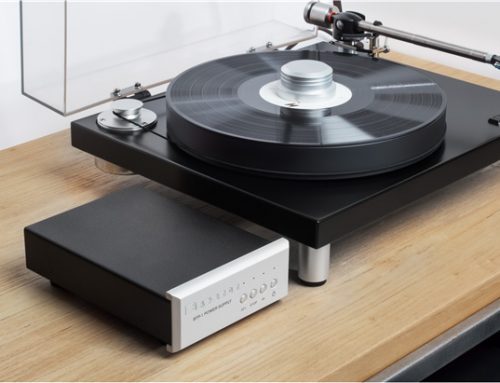As high fidelity components, receivers had relatively humble beginnings. They were essentially intended to be a compromise for those who didn’t have the space or the funds for separate components. Receivers long predate multi-channel digital surround sound and high definition video. Early units were strictly two channel analogue devices and couldn’t even switch composite video signals. One could choose between listening to the radio, a turntable or perhaps even a tape deck.
In contrast, today’s flagship receivers are computational powerhouses with a dizzying array of features and functions. And for many of us, they serve as the heart and soul of our home theater system. These tremendously capable units boast gigaflops of digital signal processing (DSP) power, as many as 11 channels of amplification with up to 150 watts of power, and sophisticated multi-zone audio and video switching capabilities. They can even interface with a wide variety of other gadgets like smart phones, wireless networks and Bluetooth devices.
Receivers have indeed come a very long way since their inception. So much so, that it can be somewhat of a challenge to decipher all the technology and associated lingo. In this article, we will attempt to make sense of it all so that you can make the best and most informed decision possible if you’re in the market for a new receiver.
How much power do I need?
This simple question is almost as old as time itself. The answer, however, is a little more complicated. Many factors influence this particular equation. The size of the home theater and the listener’s habits are certainly important considerations, but perhaps the biggest factor is speaker efficiency. For the same input power, a speaker rated at 100 decibels/Watt/meter would produce twice the volume of a speaker rated at 90 dB/W/m. Furthermore, the 90 dB/W/m speaker would require 10 times more power to match the other’s output. Clearly, coupling very efficient speakers with high power can lead to tremendous volumes. Most of us don’t need extreme volumes but high-powered receivers do provide more headroom for clean, undistorted peaks. It’s also important to realize that amplifiers produce their best results when operated far below their limits. The higher the limits, the less likely they are to be approached or exceeded.
Be careful of published amplifier specifications. A close look at power ratings reveals that they are often specified with only two channels driven. The receiver will not be capable of producing the same amount of power into all channels simultaneously. Sadly, manufacturers don’t usually publish this figure because it can be considerably lower. If a true 100 watts-per-channel receiver is desired, a unit in the 150 watt range should be purchased. Consider also the specified bandwidth of the rating. Some figures are for 1 kHz test tones rather than the full 20 Hz to 20 kHz bandwidth that humans can hear. Total Harmonic Distortion (THD) is another frequently cited specification. It refers to the difference between an amplifier’s output and input. In an ideal amplifier, the output would be perfectly identical to the input only greater in magnitude. Real world amplifiers produce small differences which are “distortions” of the input signal. Ideally, the distortion specifications should be below 0.1%. Again, be careful of published specs, some manufactures can be very liberal with the way they measure and cite specifications.
Most speakers are rated as having an 8 ohm impedance but this is actually an average. At some frequencies, a speaker may dip well below 8 ohms. Since lower impedances draw more current and are more difficult on amplifiers, make sure the receiver is comfortable with loads below 8 ohms. Fortunately, most manufacturers provide a 6 or 4 ohm load specification.
These days, receivers are usually paired with powered subwoofers which are indispensible if you want to recreate the movie theatre experience at home. The combination will do a really good job at the volumes most of us are interested in. Choose higher powered units if high volumes are required or more moderately powered models if more reasonable volumes are desired. On the other hand, if one has really inefficient speakers or enjoys really high volumes, it’s best to go with external amplification and really big subs.






